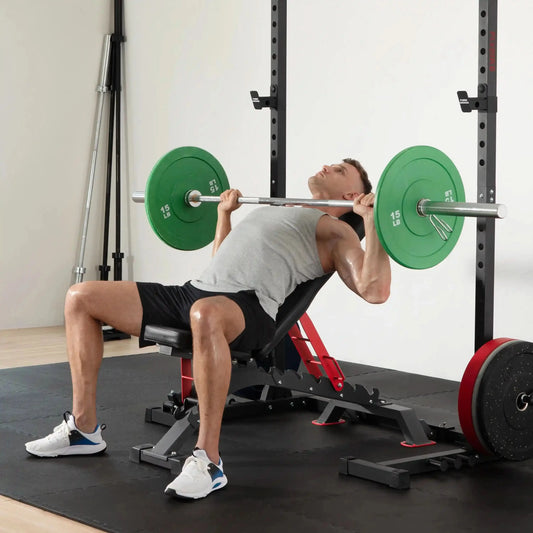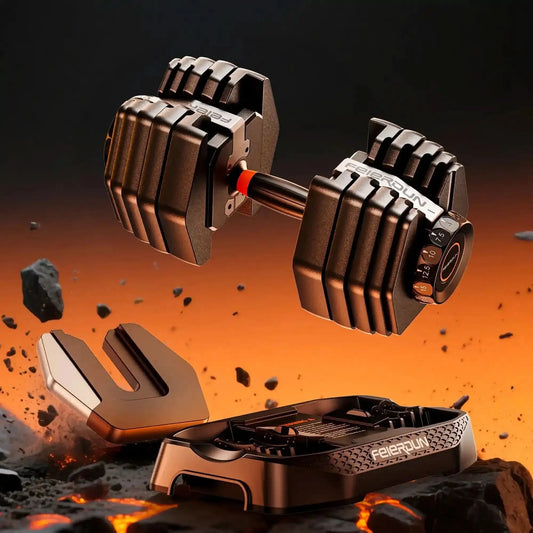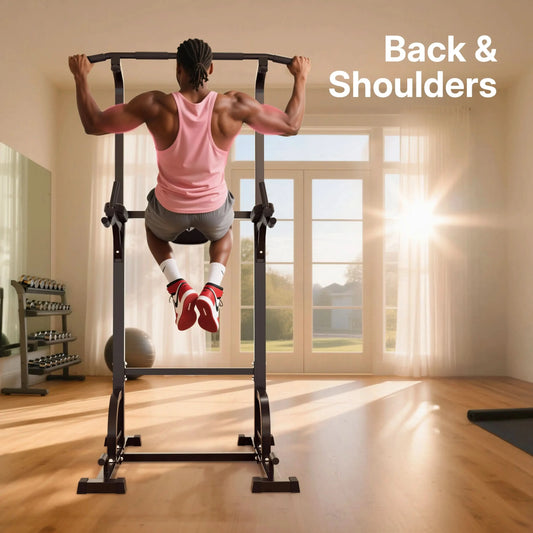
Boost Your Bench Press Core Training
FEDFitness
When lifters think about the bench press, they often focus only on chest and arm strength. Biceps, triceps, pecs: These are the muscles that others see. However, there is a quiet powerhouse that often goes unnoticed: the core. Your abs, obliques, and lower back aren’t just for looks; they form the conduit that transfers force from your legs, through the torso, to the bar.
This article breaks down the importance of a strong core for performance and provides actionable steps to build a more powerful press.
The bench press is a compound exercise that mainly works the chest, shoulders, and triceps. You create a stable pressing platform by driving through your feet and tightening your glutes and core. Without this base, the strongest chest muscles in the world can’t work at their full capacity.
You lie on a bench press and try to lift a heavy barbell; your body must remain stable. A weak core compromises bench-press efficiency, reduces stability, and increases the risk of injury. Pressing a heavy barbell requires transferring energy from your feet, through your core, and into the bar. A weak core disrupts this chain if the muscles around your rib cage cannot make compensatory forces with your chest and arms, often not very effectively.
Even a little wobbling in the torso means energy is being wasted, and one’s body has to work harder. The spinal erectors, transversus abdominis, and obliques are all called on to keep you in good positions while moving the bar with your arms.
Your core does more than just hold you together during the bench press. Here’s how it contributes:
Force Transfer
The core is a channel for energy to be transferred up from your legs to the bar. Weak abs or back muscles decrease this transfer rate.
Spine Stabilizing
Proper core strength reduces low back hyperextension, but it also limits the risk of disc herniation or rib injuries.
Control of the Bar Path
Your abs and obliques will help stabilize your torso so you're able to keep the bar moving on a preferred path. Sloppy work at the core leads to uneven lifts and plateaus.
Breathing Assistance
The core helps create intra-abdominal pressure, allowing you to brace and transmit force during the press.
But really, a bench press is not only an upper-body exercise. It is a full-body coordination test.
Unsure if your core is part of what’s holding you back? Watch for these red flags:
Lower Back Arching
If your lower back arches excessively on heavy reps, it indicates your core can’t sustain the load.
Bar Drift
Wobbling or drifting of the bar to one side may indicate your core can’t stabilize the torso.
Weak Lockout
An inability to complete the lift at the top suggests that your core is not engaged properly.
Getting Wobbly
If you feel unstable on the bench with even light weights, it’s your midsection that needs work.
For those who are affected by any of these conditions, it’s time to make core training a priority.
A solid all-around core workout is crucial to building maximum bench press strength. Here’s a closer look at the best core exercises, how they focus on pressing mechanics, and how to perform them for effective strength:
● Standard Plank: Lie face down, support your body with your elbows under your shoulders, and lift it off the ground straight from head to heels. Squeeze your abs and glutes, and hold for 30–60 seconds.
● Side Plank: Lie on one side, raise your hips, and hold. This will engage the obliques and enhance lateral stability to manage bar drift.
● Weighted Plank: Use a smaller weight plate for your back planks. This adds to your core endurance and strength under load.
● Plank with Shoulder Taps: While holding a solid plank, alternate tapping each shoulder in a crisscross pattern, support your body with your left hand as you tap your left shoulder with your right hand, then switch sides. This movement builds anti-rotation strength essential for maintaining bar path control.
Lie on your back and press your lower back into the floor. Raise your legs and shoulders off the ground, with arms overhead or beside your ears. Hold for 20–45 seconds with the core and glutes engaged. It enhances stiffness in the torso, enabling your body to resist extension that it otherwise doesn’t want during pressing heavy weights.
Start kneeling with an ab wheel or barbell, then roll forward while avoiding lumbar hyperextension or rounding. Return to the starting position. Concentrate on strict movement and avoid sinking lower in the lower back.
Level up by doing standing roll-outs or adding weight. The anti-extension strength built here will have a carryover straight into bench press stability, especially under heavy loads.
Sit on the ground and lean back a little while holding a weight plate or dumbbell. Gradually twist your torso from one side to the other.
This activates the obliques and transverse abdominis, improving rotational stability and reducing asymmetry when pressing heavy dumbbells or unbalanced loads. Cable twists provide a variable resistance and constant tension, which is great for progressive overload.
Secure your feet on a glute-ham developer machine and lower your torso under control before raising it back up. Develop the posterior chain (glutes and hamstrings).
With your upper back supported on a bench, place a loaded barbell across your hips. Drive through heels, fully extending hips. Both will develop more strength in the posterior chain that translates into a stiffer core overall and better leg drive for a more explosive bench press.
Holding a pair of heavy dumbbells or kettlebells at your sides, walk the given distance with an erect torso and tight abs. Includes the whole core in resisting lateral and rotational forces while weighted, translating to a more stable trunk under load (i.e., barbell).
Modifications: Single-arm carry, overhead carry, or suitcase carry for more advanced anti-rotation work.
Your back should be on the floor, your arms raised toward the ceiling, and your knees bent at a 90-degree angle. Slowly lower the opposite arm and leg without letting your back arch. Develops anti-extension control, coordination, and deep core engagement to preserve a neutral spine during pressing.
Pro Tip: Pair static holds (held planks, hollow holds) with dynamic movements (roll-outs, twists, carries) to build a core that is strong and responsive. This strategy of static holds and dynamic movements creates both a stable platform under load and a body that can harness maximum force.
It doesn’t take hours of extra training to incorporate core work into a routine. Here’s a practical approach:
Warm-Up
Begin your bench session with some light core activation: planks, hollow holds, or bird dogs. This preps your torso for better neural activation.
Between Sets
With short exercises, high tension workouts like planks or farmer’s carries between bench sets for speed endurance.
Stand-Alone Workouts
Focus on core work twice a week while using heavier or more advanced exercises (ab roll-outs, weighted planks).
Progression
Slowly add time under tension, resistance, or complexity to prevent plateaus.
Few things matter as much as quality and consistency. Even just 10-15 minutes of directed core work can make a tremendous difference in your bench over time.
The bench press is not limited to the chest, shoulders, and triceps. It’s your body’s secret weapon for stability, power, and safety. Neglecting it short-changes progress and creates more potential for injury, while keeping your pressing strength from reaching its full potential. With the inclusion of up-to-date core exercises for strength, activation, and stabilization, lifters can lift more weight safely, with greater consistency. You don’t ignore your core; that’s not an option if you care about benching. Keep in mind that the stronger the foundation, the taller the building.
For most lifters, 2-3 specific sessions per week with activation before a heavy press is fine.
Absolutely. Strong core power transfer is efficient when force from your arms and chest can be relayed to the bar with minimal interference.
Light activation before sets primes your muscles. Heavier core work can follow pressing or be programmed on off days.
Both have value. Dumbbells provide a more extensive range of motion and can be done unilaterally, which will further challenge the core. The barbell press permits heavier weights and a more linear progression. A combination of the two is what’s best for chest and core development.
Back to blog











